Entering an old theater is like walking through history. The ornate ceiling molding, the velvet curtains, and that unmistakable scent of polished wood and years of performances all give the sense that newer theaters simply can’t compete with them. These works of architectural art have watched it all, from vaudeville shows to Broadway premieres, weather wars, depressions, and the arrival of TV and streaming.
It is not so much the age of these spaces that distinguishes them, but rather that they are still alive with performances. Below is a list of 18 historic theaters still filled with shows, demonstrating that some things are best left unchanged.
The Palace Theatre
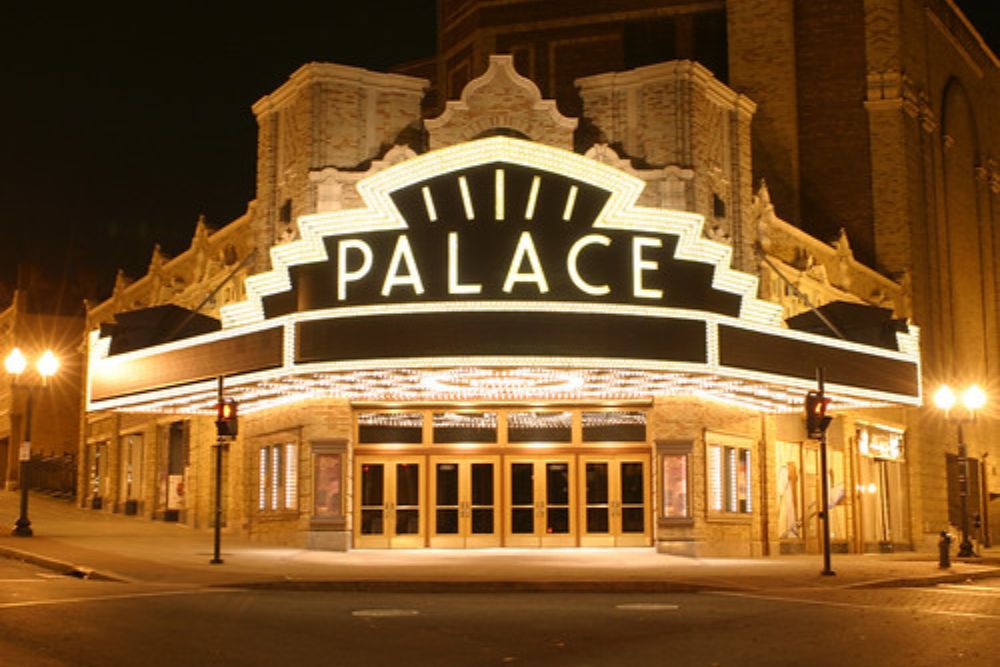
Constructed in 1913, The Palace Theatre acquired the reputation of the ‘Vaudeville Capital of the World’ within its first few decades. It is now one of Broadway’s most famous theaters, which presents premier musicals and serves as a Times Square gem.
The distinctive Beaux-Arts architecture and 1,740-seat capacity of the theater bring grandeur to every show. Its position at the epicenter of the Theater District positions it to have seen the development of American entertainment firsthand, from vaudeville’s heyday to the big-budget productions of the present day.
Ford’s Theatre
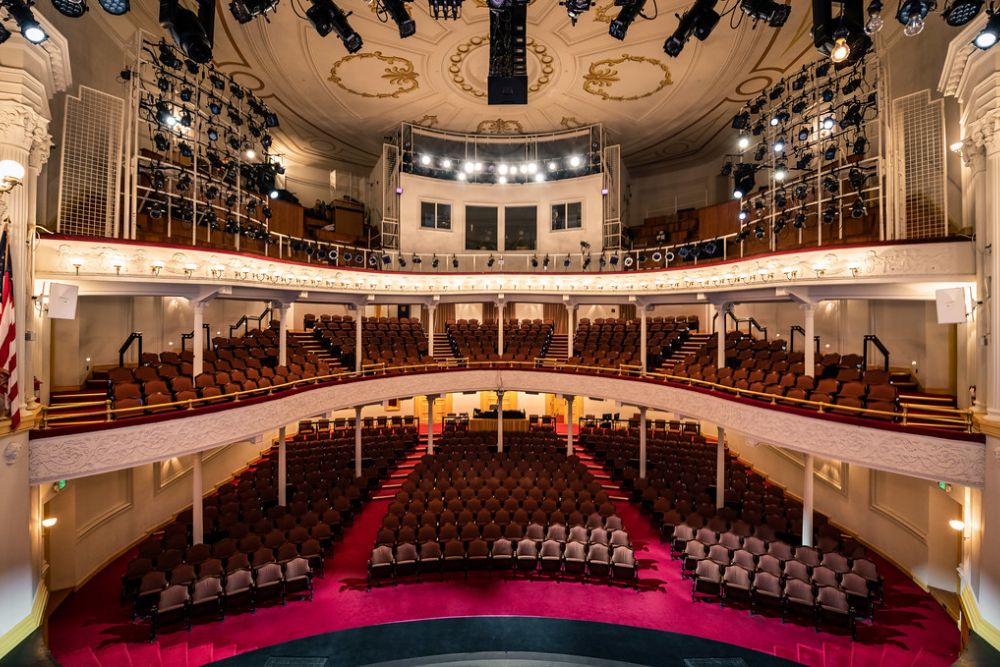
This Washington D.C. theater features one of the heaviest historical weights on American theater—it is the place where President Abraham Lincoln was assassinated in 1865. Rather than let tragedy encapsulate it once and for all, Ford’s Theatre reopened in 1968 and serves today as both a working theater and museum.
The intimate 665-seat house produces everything from traditional American plays to world premieres. Slouching in those reddish-brown velvet chairs, you cannot help but feel the history, making every performance a profoundly American experience.
Like Travel Pug’s content? Follow us on MSN.
The Orpheum Theatre
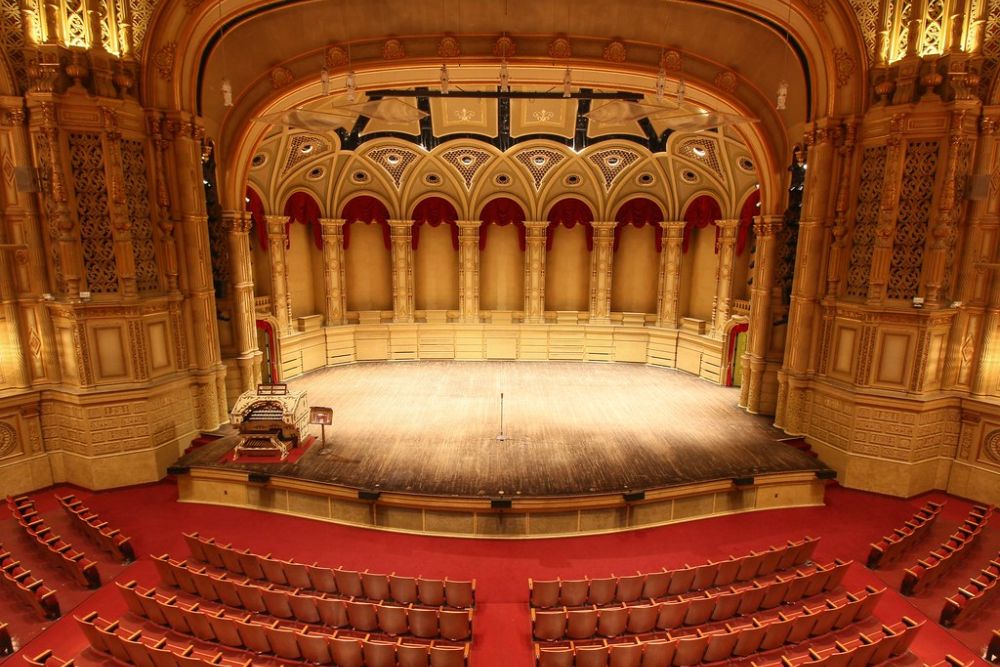
Memphis knows how to keep its musical heritage close, and The Orpheum Theatre is living history. This French Baroque and Italian Renaissance theater, which opened in 1928, has seen Elvis Presley as well as current touring Broadway shows. Its 2,308 seats have been filled by audiences enjoying everything from vaudeville to current musicals.
What sets The Orpheum apart is how it blends the city’s rich musical history with traditional theater to produce shows that literally have a sense of being deeply rooted in the city’s cultural fabric.
Boston Opera House
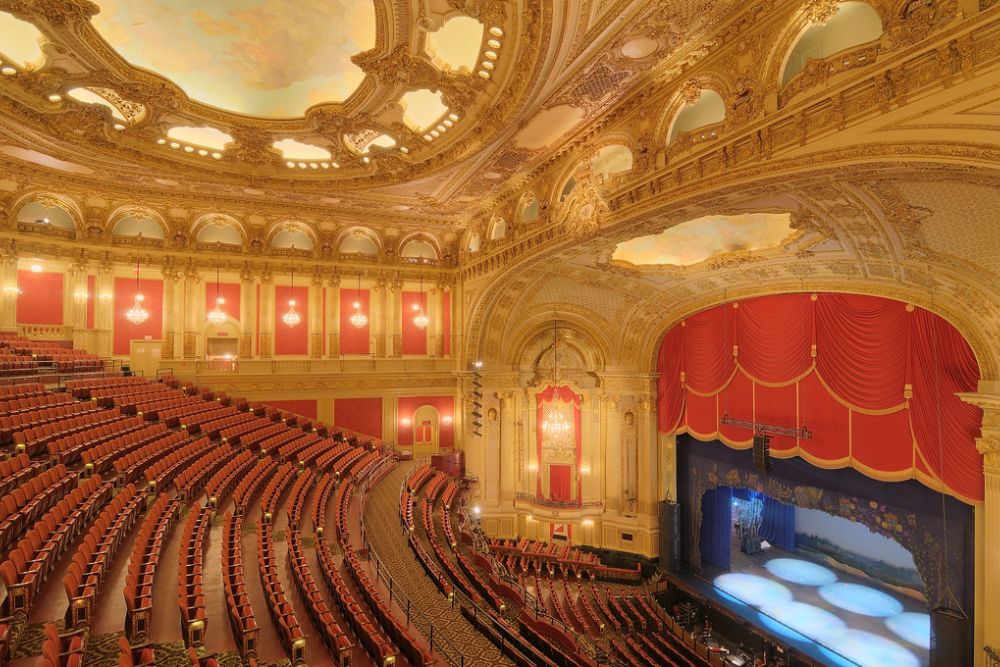
Originally opened in 1928 as the B.F. Keith Memorial Theatre, this Boston landmark, underwent extensive renovation in the early 2000s to restore its original grandeur. The venue’s ornate Italian Renaissance interior features gold leaf details and crystal chandeliers that transport audiences to theater’s golden age.
With 2,677 seats arranged across multiple levels, the Opera House provides excellent sightlines and acoustics. Today, it serves as home to the Boston Ballet and hosts major Broadway touring productions, proving that careful restoration can breathe new life into historic venues.
The Majestic Theatre
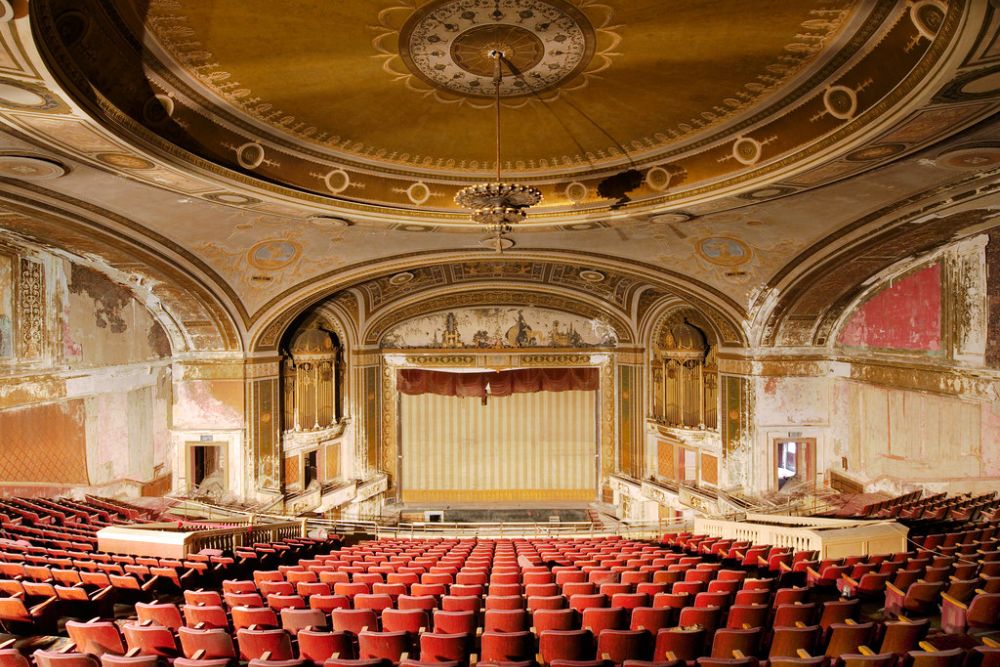
San Antonio’s Majestic Theatre opened in 1929 as one of the most elaborate atmospheric theaters ever built. The ceiling depicts a Mediterranean courtyard complete with twinkling stars and moving clouds, creating the illusion of an outdoor evening performance.
This 2,264-seat venue survived the decline of movie palaces by adapting to live performances, now hosting everything from Broadway shows to concerts. The theater’s Moorish and Spanish Colonial Revival architecture makes every visit feel like a journey to another continent, not just another era.
Like Travel Pug’s content? Follow us on MSN.
The Warner Theatre
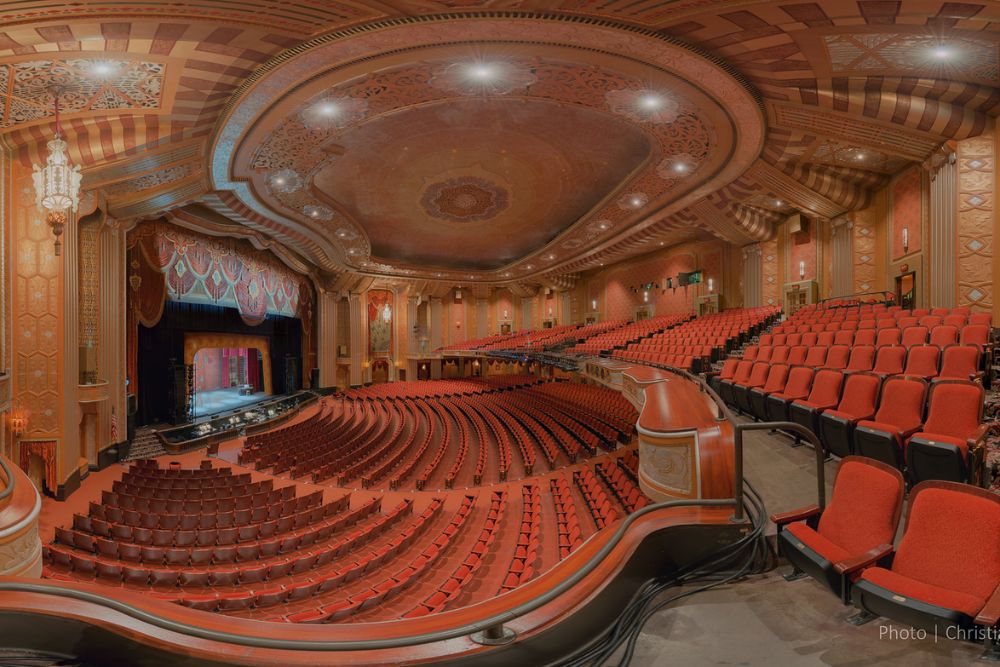
Built in 1924 in Washington, D.C., The Warner Theatre represents the golden age of movie palaces with its neoclassical facade and elaborate interior design. The venue’s 1,847 seats are arranged in a traditional theater layout that provides intimate viewing despite the large capacity.
After serving primarily as a movie theater for decades, The Warner successfully transitioned to live entertainment in the 1990s. Today, it hosts everything from comedy shows to major musical acts, proving that these grand old venues can adapt while maintaining their historic charm.
Benedum Center
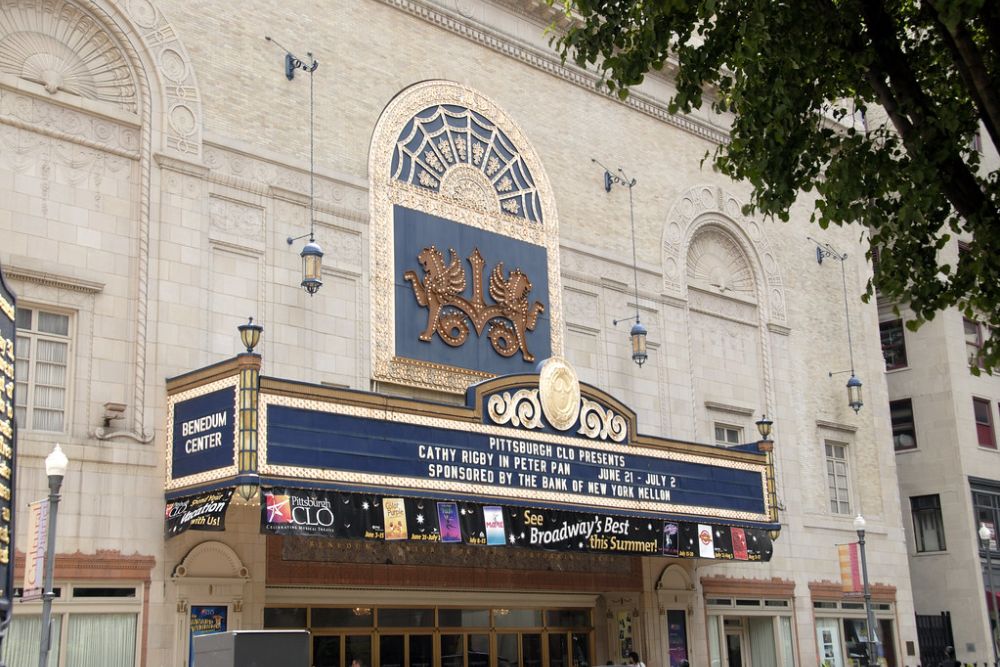
Pittsburgh’s Benedum Center started life in 1928 as the Stanley Theatre, one of the most opulent movie palaces of its era. The venue’s French Baroque interior features hand-painted ceilings, crystal chandeliers, and gold leaf details that create an atmosphere of old-world elegance.
With 2,885 seats spread across multiple levels, it ranks among the largest historic theaters still in regular use. The Benedum now serves as home to the Pittsburgh Opera and Pittsburgh Ballet Theatre, while also hosting major Broadway touring productions throughout the year.
The Chicago Theatre
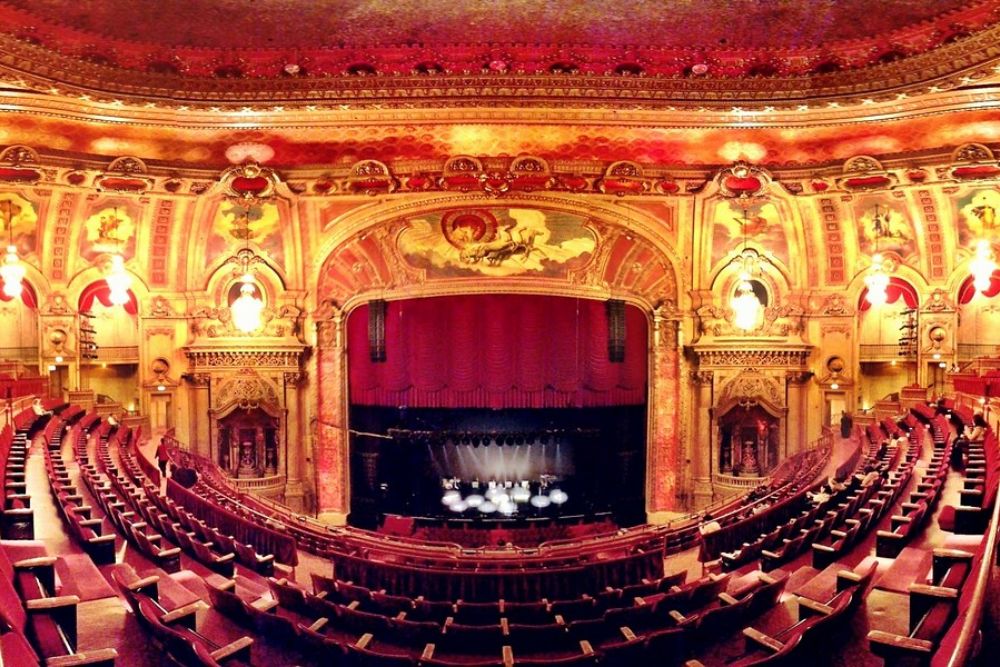
No discussion of historic theaters is complete without mentioning The Chicago Theatre, built in 1921 and famous for its iconic vertical marquee sign. This French Baroque masterpiece seats 3,600 people across six floors, making it one of the largest theaters in the country.
The venue’s ornate interior features a replica of the Palace of Versailles’ Royal Chapel, complete with elaborate plasterwork and murals. While it originally showed movies, The Chicago Theatre now focuses on live entertainment, hosting everyone from comedians to major musical acts in a setting that screams old-school glamour.
Like Travel Pug’s content? Follow us on MSN.
Paramount Theatre
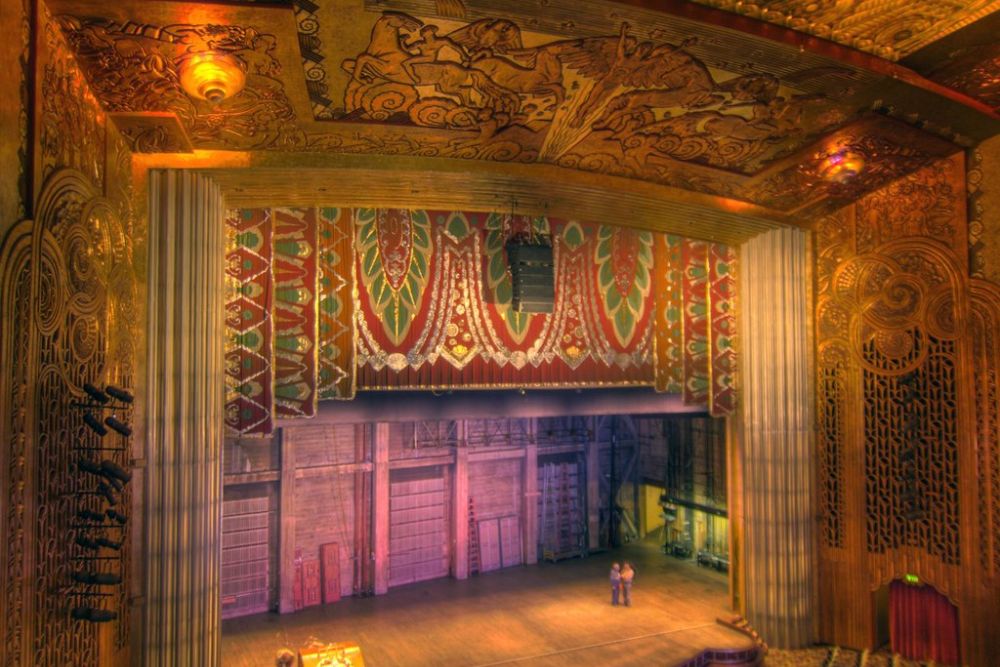
Austin’s Paramount Theatre opened in 1915 and has been entertaining Texans for over a century. The venue’s intimate 1,300-seat capacity creates a cozy atmosphere that’s perfect for both live music and theatrical performances. What makes the Paramount special is how it’s woven into Austin’s cultural fabric—it’s not just a historic building, but an active part of the city’s vibrant arts scene.
The theater’s simple but elegant design focuses attention on the stage, where audiences have enjoyed everything from vaudeville to modern indie bands.
The Fabulous Fox Theatre
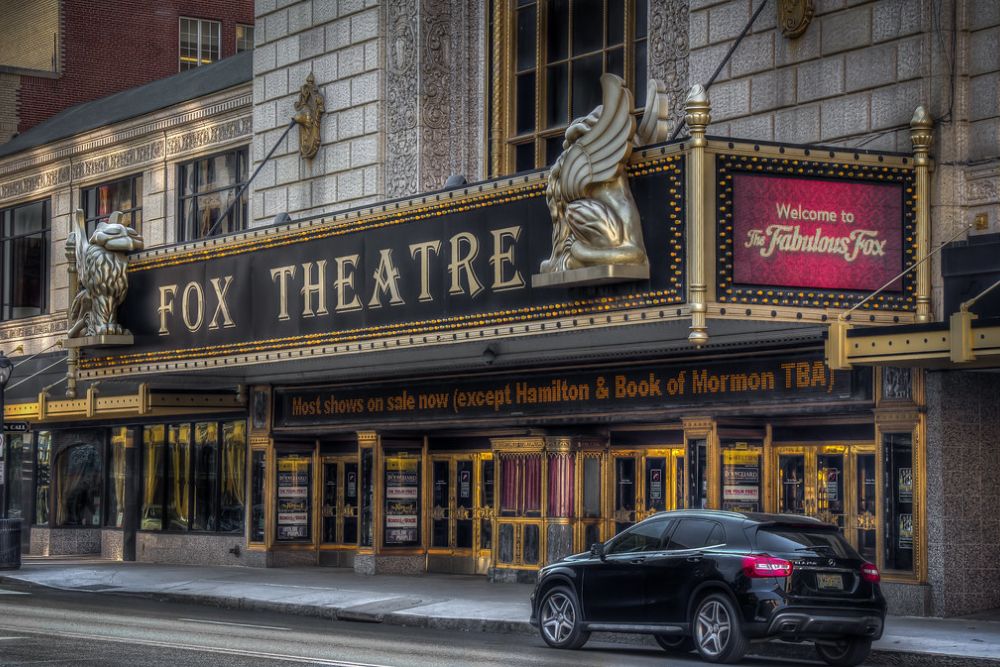
Atlanta’s Fox Theatre, built in 1929, represents the peak of atmospheric theater design with its Moorish-style architecture and star-filled ceiling. The venue seats 4,678 people in an interior that resembles an Arabian courtyard, complete with a night sky that changes throughout performances.
Originally designed as a Shriners temple before becoming a movie palace, the Fox survived near-demolition in the 1970s thanks to passionate community efforts. Today, it hosts major Broadway productions and concerts, serving as Atlanta’s premier venue for large-scale entertainment.
Lyceum Theatre
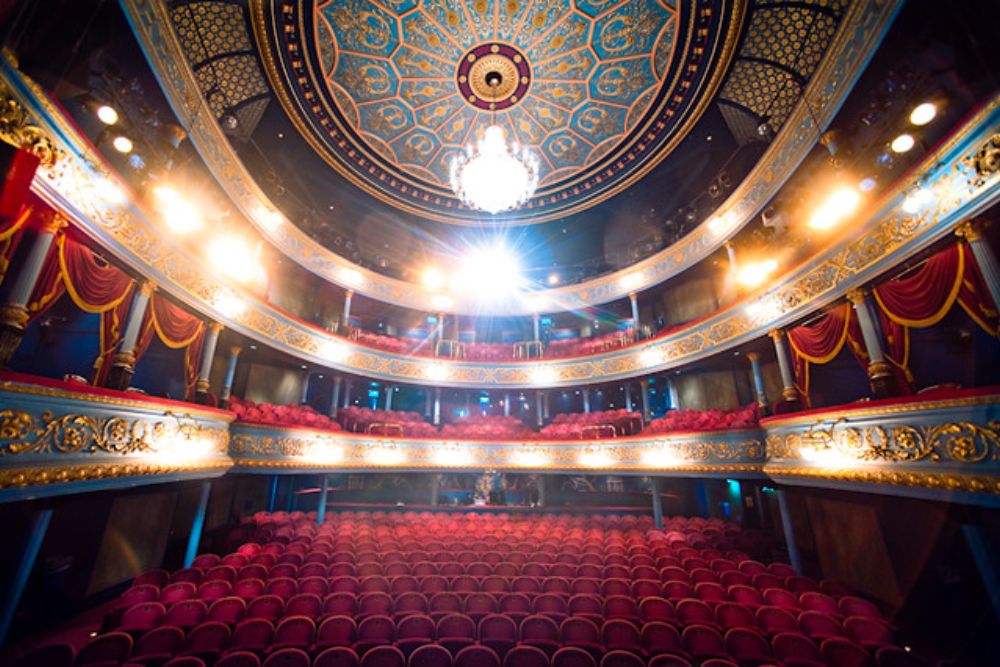
New York’s Lyceum Theatre holds the distinction of being Broadway’s oldest continuously operating theater, having opened in 1903. This intimate 922-seat venue maintains its original Beaux-Arts facade and much of its period interior detail. The Lyceum’s smaller size creates an unusually close connection between performers and audiences, making every performance feel personal.
Despite its age, the theater has hosted numerous Tony Award-winning productions and continues to be a favored venue for serious dramas and intimate musicals.
Like Travel Pug’s content? Follow us on MSN.
Pabst Theater
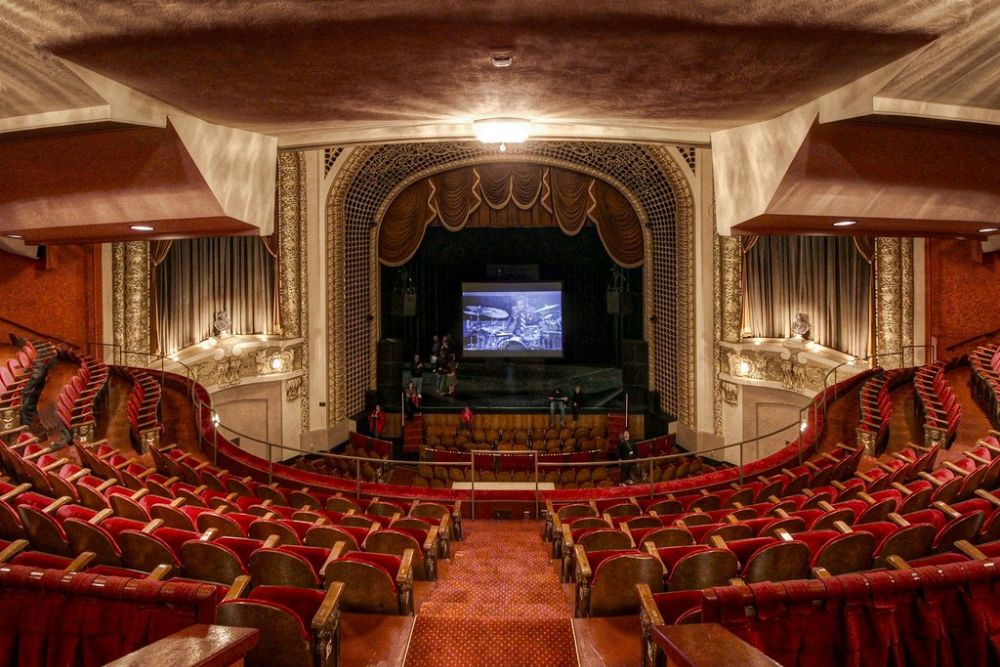
Milwaukee’s Pabst Theater opened in 1895 and stands as one of the few remaining examples of late 19th-century theater architecture. The venue’s 1,345 seats are arranged in a traditional opera house layout with elaborate box seats and a horseshoe-shaped balcony.
The theater’s Austrian Baroque interior features rich red velvet, gilded accents, and detailed plasterwork that creates an atmosphere of European elegance. After extensive restoration in recent decades, the Pabst now hosts touring Broadway shows, concerts, and local productions while maintaining its historic character.
Oriental Theatre
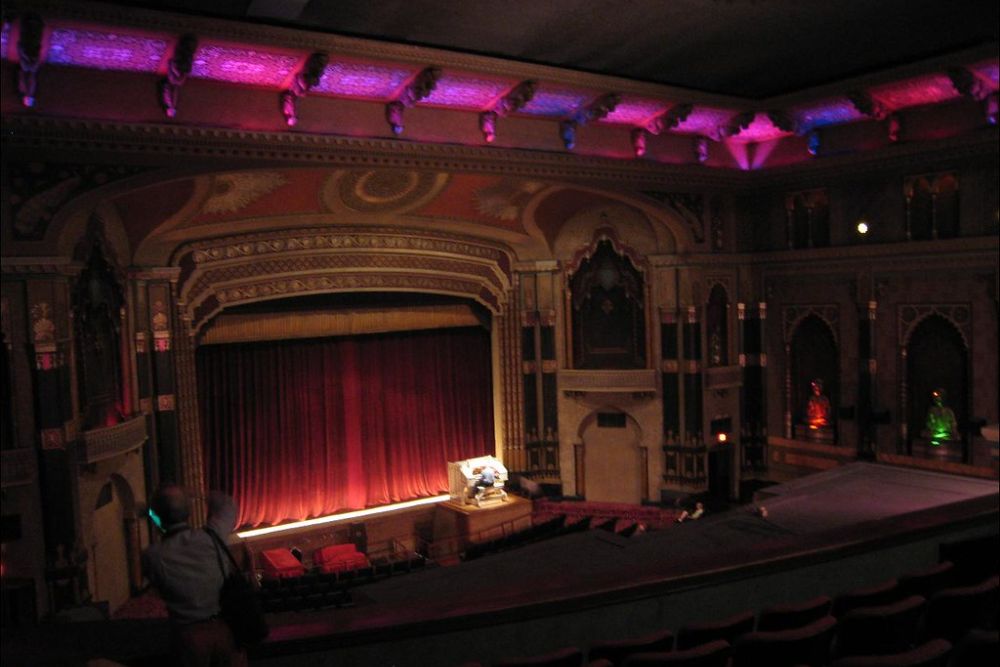
Chicago’s Oriental Theatre opened in 1926 as a lavish movie palace before becoming a legitimate theater in the 1990s. The venue’s East Asian-inspired interior design includes elaborate chinoiserie details, silk wall coverings, and ornate ceiling work that creates a uniquely exotic atmosphere.
With 2,253 seats arranged across multiple levels, the Oriental provides excellent sightlines and acoustics for modern productions. The theater now serves as home to major Broadway touring shows, bringing the best of New York theater to Chicago audiences in an authentically historic setting.
The State Theatre
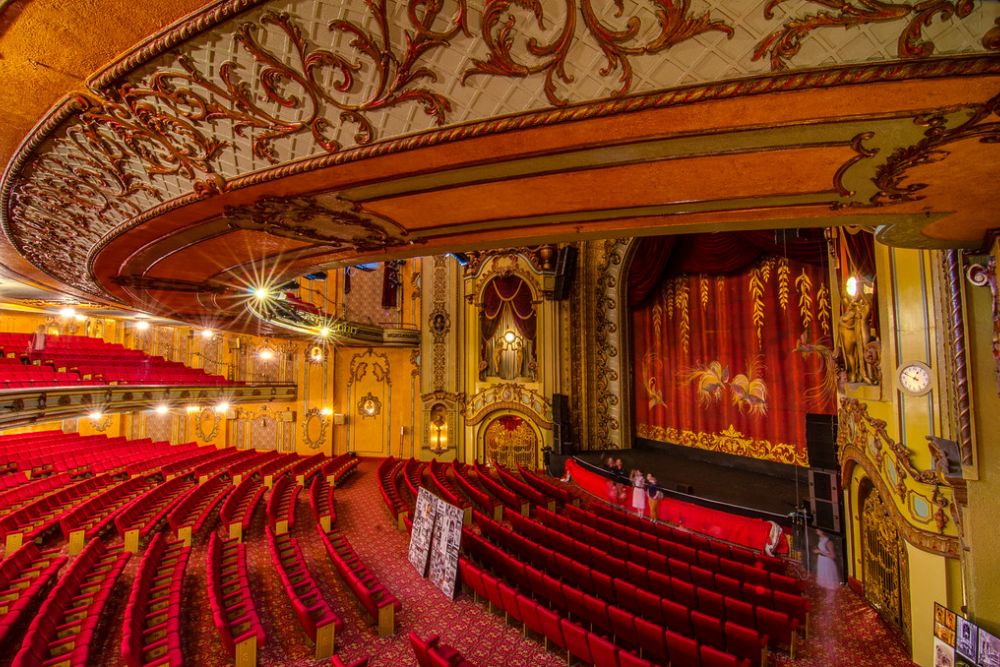
New Jersey’s State Theatre in New Brunswick opened in 1921 and has been serving audiences for over a century. This 1,847-seat venue originally functioned as both a movie palace and a vaudeville house before transitioning to live theater. The theater’s Renaissance Revival architecture features elaborate plasterwork, stained-glass details, and a magnificent chandelier that dominates the lobby.
After major renovations in the 1980s, The State Theatre now hosts everything from classical music to contemporary dance, proving that historic venues can successfully serve diverse artistic communities.
Like Travel Pug’s content? Follow us on MSN.
Heinz Hall

Pittsburgh’s Heinz Hall began life in 1927 as the Loew’s Penn Theatre, one of the most elaborate movie palaces ever built. The venue’s 2,676 seats are arranged in a traditional theater configuration that provides excellent acoustics for both amplified and acoustic performances.
The hall’s ornate interior combines Renaissance and Baroque elements with modern technical capabilities, creating a perfect balance of historic atmosphere and contemporary functionality. Today, it serves as home to the Pittsburgh Symphony Orchestra while also hosting major touring productions and special events.
The Riverside Theater
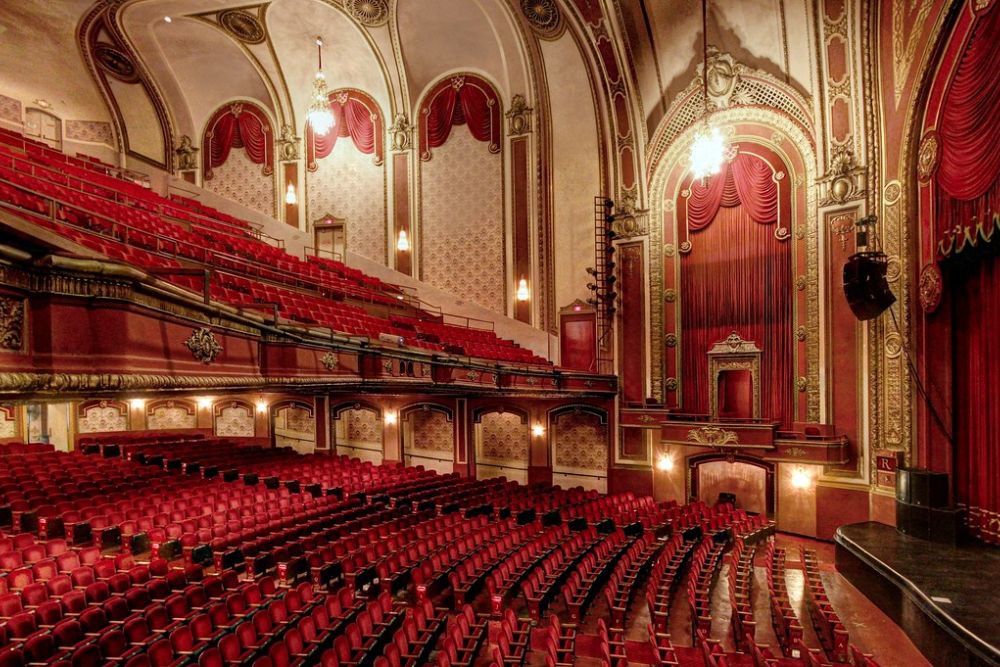
Milwaukee’s Riverside Theater opened in 1928 and represents the final era of grand movie palace construction. The venue’s 2,424 seats are arranged in a fan-shaped configuration that ensures good sightlines from every location. The theater’s Spanish Colonial Revival architecture features elaborate tile work, carved wooden details, and painted ceiling beams that create a warm, inviting atmosphere.
After decades of showing movies, the Riverside successfully transitioned to live entertainment and now hosts major concerts and theatrical productions while maintaining its historic charm.
Shea’s Performing Arts Center
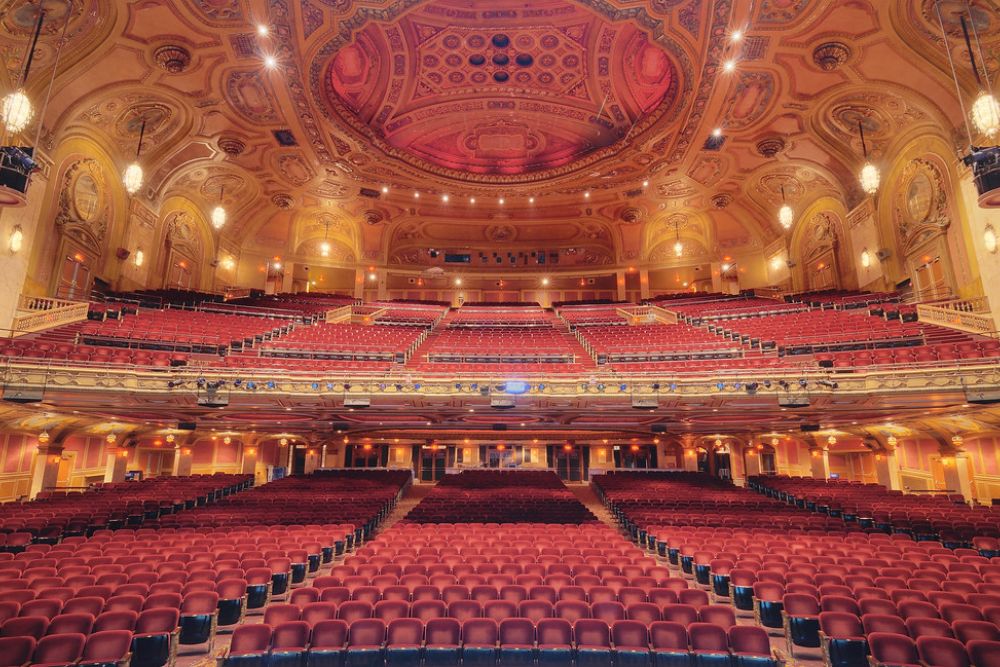
Buffalo’s Shea’s Theater opened in 1926 as Shea’s Buffalo Theatre, representing the height of movie palace luxury. The venue’s 3,019 seats are arranged across multiple levels in an interior that combines Louis XIV French styling with elaborate plasterwork and crystal chandeliers.
The theater’s grand foyer and ornate auditorium create an atmosphere of old-world elegance that enhances every performance. Today, Shea’s serves as Western New York’s premier venue for Broadway touring productions, bringing major theatrical events to audiences in a setting that rivals any theater in the country.
Like Travel Pug’s content? Follow us on MSN.
The Cadillac Palace Theatre
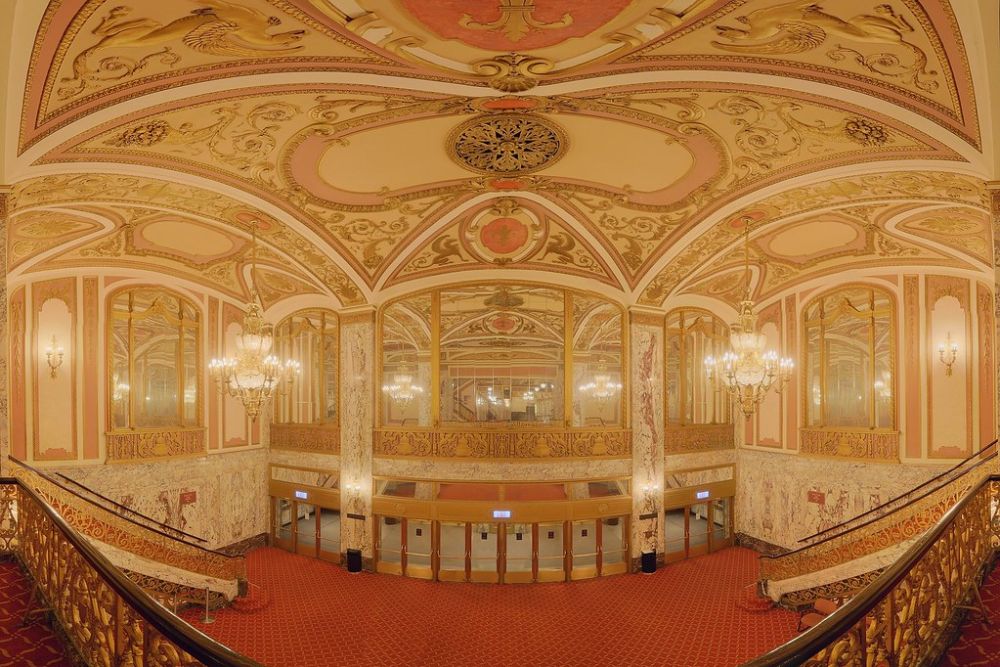
Chicago’s Cadillac Palace Theatre opened in 1926 as part of the Orpheum vaudeville circuit before transitioning to movies and eventually live theater. The venue’s 2,344 seats are arranged in a traditional theater layout that provides intimate viewing despite the large capacity.
The theater’s French Baroque interior features elaborate ceiling murals, crystal chandeliers, and gold leaf details that create a sumptuous atmosphere. After extensive renovation in the 1990s, the Cadillac Palace now serves as one of Chicago’s premier venues for major Broadway touring productions.
Still Drawing Crowds After All These Years
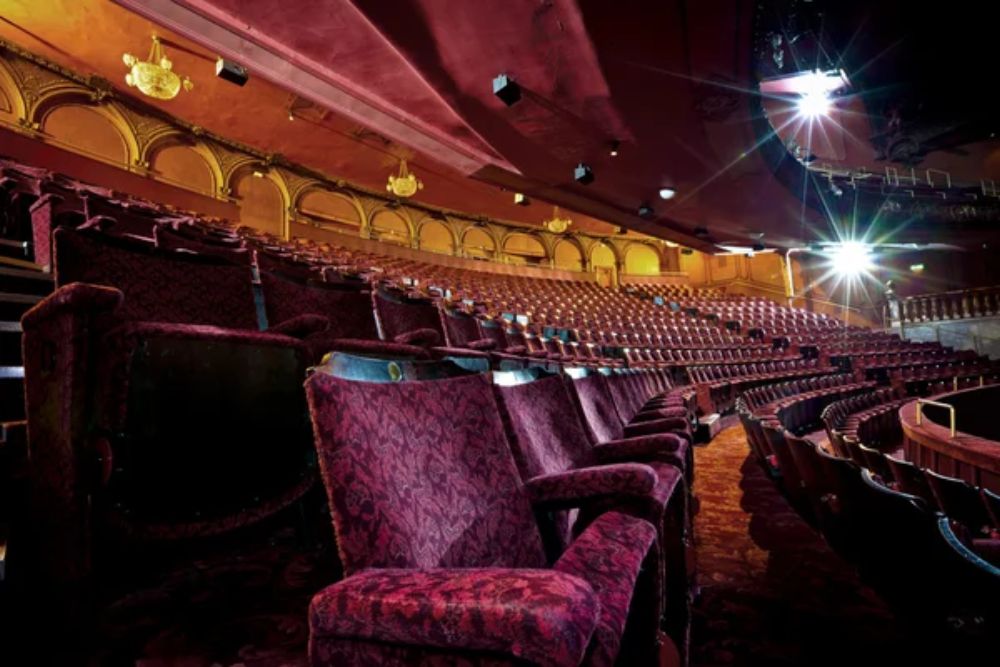
These theaters prove that great architecture and careful preservation can keep historic venues relevant for new generations. Each one started as a movie palace or vaudeville house, adapted to television’s challenge, and found new life hosting live performances.
What they offer modern audiences goes beyond nostalgia—it’s the irreplaceable experience of seeing live entertainment in spaces designed when theater was America’s primary form of public entertainment. Their survival reminds us that some things are worth saving, especially when they continue to create magic night after night.
More from Travel Pug

- 20 Best Beach Towns in the Carolinas
- 13 Destinations Where Tourists Regularly Regret Their Trip
- 20 Things You Actually Get in First Class
- 20 Small Airports With Aviation Museums
- 20 Places in the U.S. That Are Perfect for a Reset Trip
Like Travel Pug’s content? Follow us on MSN.
